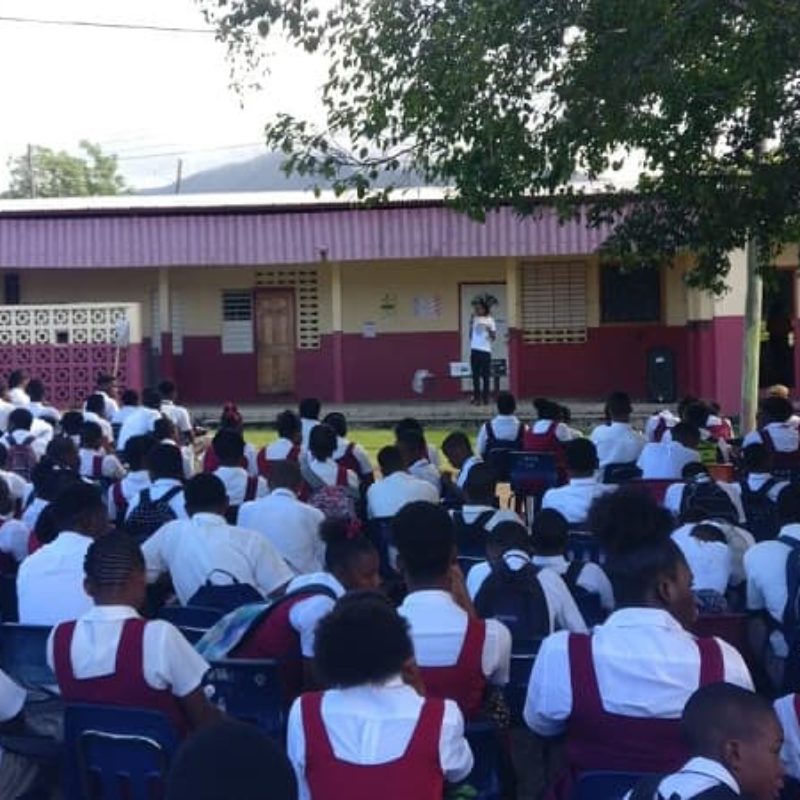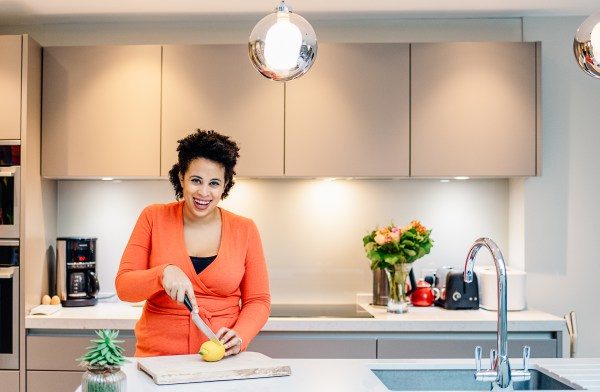I remember it like it was yesterday, I was 27 years old living in Washington, D.C. I kept feeling a sharp, somewhat dull ache in my pelvic area. I had never felt anything like it before. It would creep up on me suddenly and out of the blue. At times, it would trigger a sharp pain down my leg. At first I ignored it, as I thought it was just related to my monthly menstrual cycle. I always felt deeply connected to my body and prided myself on trusting my intuition. I decided, it was time for a visit to my doctor.
My doctor, always friendly, always efficient. She ran every test imaginable, we even repeated some twice. Some were painful, others were very routine. I had several smears done, in an attempt to make sure nothing suspicious was missed. After months of tests, exams and being prodded, I was told, “Nothing is wrong with you.” I was relieved but at the same time confused. Why didn’t the doctor know, why isn’t she fixing me, after all that is her job. Back then I obviously gave doctors a little too much power. I have come a long way, as this blog will soon describe. It didn’t end there, I saw another doctor, this time recommended by one of my mentors. She said, “Jo-Ann, he is the best. When I had my breast cancer, he took care of me and he is the reason why I survived.” I visited him and the results were the same. I returned to my old doctor and once again, she told me there is nothing wrong with me. She suggested over the counter painkillers and at one point intimated that I may depressed. This is when it dawned on me that I have something that they don’t understand. She said, “Yes, you have fibroids, but they do not cause pain. “You are fine,” she continued, “Your blood flow is fine and all looks good!”
I went home and started researching. I became obsessed, fascinated and even a little in love with my fibroids. I felt like I had to love them in order to understand them, otherwise I would have just been in a perpetual state of frustration. Weird but true, I really immersed myself into this world of uterine myomas, my uterus, my ovaries and widely speaking, my womb. You, see I did not fit the criteria for what doctors generally believe are problematic, therefore I was somewhat sidelined.
A year later at aged 28 I relocated to the UK. I was beginning a new era in my life. I was starting business school, transitioning and looking forward to a new chapter across the pond in Europe. The pain continued, life continued and nothing changed. I decided to visit my GP, perhaps she would tell me something different and she did! She told me I did indeed have fibroids, she mentioned there were many of them, some bigger than others and that based on their position, they were in fact causing pain and creating some discomfort. I felt relieved, she paid attention and asked me the right questions. She was very laid back, she spoke with ease and experience. At one point she suggested I relax and try to get to know more about my body. I heard what she said but I was not truly willing to pay attention. I wanted a quick fix, I needed relief. She explained that fibroids are normal but sometimes they can be a nuisance. She referred me to a gynaecological consultant, in short, in the summer of the year of my 29th birthday I had the fibroids removed via laparoscopic myomectomy. I initially felt the difference! I was lighter, the pain was gone and well, I was happy again.
I forgot about my fibroids until seven years later at aged 36, when I was participating in a duathlon and I felt it, that pain, the one that struck me almost ten years before. I knew exactly what it was and I was overwhelmed with grief and sadness. I visited my GP, this time a different lady, who was somewhat cold and unapologetic. She said, “Yes, you have fibroids but they are normal and you can live with them. I am sorry but we cannot do anything for you. I have women with bigger problems and I think you will be fine.” I went home and I cried, not only was she was lacking in empathy and slightly rude but she completely disregarded my experience. Other women had bigger problems than me, what does that even mean? Yes, of course, I do not have uterine cancer or endometriosis but does this make me less worthy of attention?
After wallowing in self pity for weeks, I decided to contact the lovely consultant who performed my laparoscopic surgery. Can you believe he died? Additionally, I read online that before he died he was involved in a malpractice lawsuit, after performing the same procedure on another woman, who unfortunately died. It is as if everything was against me. I sobbed some more. I was miserable for months.
Then one day, I was online and read about acupuncture. This is probably where I should state that I am a vegan, I have been so for 23 years now. I am very active, I exercise regularly-cycling, walking, hiking, I love being in nature, I tend to think I am positive, open minded and in touch with my body. This is what I thought, until I visited my acupuncturist for the first time. She was also a Chinese traditional doctor. With every visit I learned something new about traditional Chinese medicine, the teas, the pins she stuck in my body and the like. I was fascinated. I kept asking her, “Is this going to work?” She always smiled but never responded, until one day she said, “Everything will work, when you get to know your body.” Was that not what the really nice GP said too? She also said, “You work long hours, you don’t sleep well, despite being a vegan you drink too much coffee, you don’t breathe, you are like a machine, jumping from one thing to the next.” She added, “You are like a jumping rabbit.” She was right!
This time around I was ready to listen and so I did. I started studying my body, paying attention and tuning in. She taught me how to meditate, how to breathe, she told me to start doing yoga again ( I did it for a year when I was 25 and stopped). She also encouraged me to keep a period diary. I began reading books about my body, my womb and explored how my hormones affect all of me. This then introduced me to the concept of what it means to be feminine. For a long time I thought to be feminine is to a be a woman. Every woman is feminine right? Well, not really, every book I read touched on the pillars of femininity such as collaboration, empathy, patience and vulnerability. Everything I was NOT! And why? Because I was too busy letting life run over me. A mental shift began and I started making connections between my mind, my body- specifically my fibroids and hormones- and connecting to my inner me. I literally tapped into my inner self in a way I had never done before.
I believe that my fibroids were my body’s way of saying you are off, you are out of sync and you need to fix it. In a strange way I believe it was my body screaming for me to connect with my womanhood and all those things that make me uniquely me. Somehow along the way between the career and incessantly doing I lost all of those feminine qualities and it took years of pain, one laparoscopy, a very wise acupuncturist, several doctors and my willingness to surrender to my intuition to arrive at where I am now.
I turn 40 in two months, I still have the fibroids but there is no pain, they have not grown or shrunk and I have learned how to manage them. I also switched careers, started a business, relocated to a new country and have an understanding of my body that I never knew existed. It is quite unbelievable what can happen when one pays attention to all the signs around them.
I honestly believe that this experience was meant to enhance my quality of life. I no longer see my fibroids as these awful tumours lingering inside of me but as reminders of how I should live and what I should focus on. Every woman has a different fibroid story and albeit mine does not include heavy periods and endless bleeding, the mental and emotional burden was heavy. I think my connection to my inner self is one that I never knew existed and has transformed my mindset and life in unconventional and unremarkable ways.
I realise now that the quality of my life is not dependent upon what I do, or how I do it but how deeply connected I am to my body. For a very long time, I thought I knew who I was because I ticked all the boxes. What a revelation, I actually didn’t. If you were like me, looking for relief the first step, does not begin with that doctor’s appointment and it does not end with a yoga class. Instead it begins with you. Like I was told more than once, “Get to know your body.” And I will add, get to know you! An exploration of self is the beginning to a curing of the mind, body and spirit!
Lake Health and Wellbeing would like to say a big thank you to Jo-Ann for sharing her experience with fibroids, we hope that through her experience you have gained some useful insight into this condition.
If you have any questions or comments please do leave these in the comments section below.

Disclosure: this post contains an affiliate link. Find out more here



























